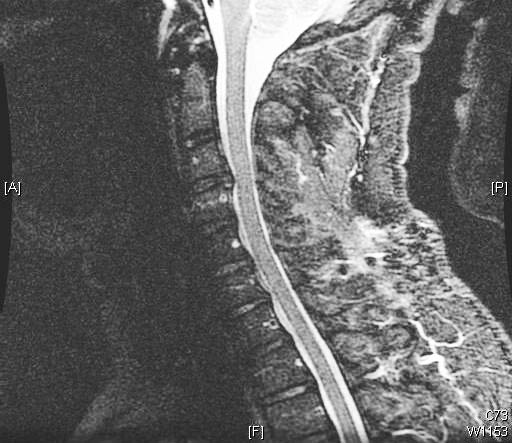Last reviewed: 20 Mar 2025
Last updated: 23 Sep 2021
Summary
Definition
History and exam
Key diagnostic factors
- presence of risk factors
- spontaneous onset of neck pain
- cervical muscle pain and spasm
- headaches or occipital pain
- weakness or numbness
- presence of radiating arm pain
- reflex changes
- proximal arm weakness
- distal hand weakness
- gait ataxia
Other diagnostic factors
- cervical muscle spasm
- decreased cervical range of motion
- sensory changes
Risk factors
- age >40 years
- head or neck trauma
- previous cervical spine surgery
- previous cervical myofascial strain
- genetic predisposition
Diagnostic investigations
Investigations to consider
- cervical CT scan
- cervical CT myelogram
- cervical/upper extremity electromyography or nerve conduction velocity
- cervical nerve root block
Treatment algorithm
Contributors
Authors
Dennis A. Turner, MA, MD

Professor
Neurosurgery and Neurobiology
Duke University Medical Center
Durham
NC
Disclosures
DAT is an author of a reference cited in this topic.
Peer reviewers
Ricardo Pietrobon, MD, PhD, MBA
Associate Professor of Surgery
Associate Professor in Anesthesiology
Associate Vice-Chair, Systems Integration
Department of Surgery
Duke University Medical Center
Durham
NC
Disclosures
RP is an author of a number of references cited in this topic.
Allan I. Binder, MD
Consultant Rheumatologist
Lister Hospital
East and North Hertfordshire NHS Trust
Stevenage
UK
Disclosures
AIB is an author of a number of references cited in this topic.

Guidelines
- ACR appropriateness criteria: cervical neck pain or cervical radiculopathy
- A clinical practice guideline for the management of patients with degenerative cervical myelopathy: recommendations for patients with mild, moderate, and severe disease and nonmyelopathic patients with evidence of cord compression
Use of this content is subject to our disclaimer

